The three major trends in the automotive industry – electrification, networking, and automation – have one thing in common, software.
We are at the gate of the automotive technology revolution. This is not an automated change, although the automation revolution is coming. But this change is driven by the existing and rapidly evolving underlying technology. The anti-collision technology realized by the Advanced Driver Assistance System (ADAS).
ADAS has both safety and market significance. Whether it is Daimler, Toyota, Ford, Nissan, General Motors or other automotive OEMs, or Google, no one will fully auto-steer, brake or accelerate the car before trusting the performance of this technology. ADAS is expected to reduce accidents first and assist the driver as a “co-pilotâ€, eventually replacing the driver completely and taking control of the journey as “auto-drivingâ€.
As soon as you can feel the impact of this technology, the adoption of any new technology seems to be very similar. For example, the first commercial mobile phone network was first put into use in the Baltimore-Washington metropolitan area in the United States in 1983. At that time, the cost of the phone was about $3,000, and the users were scarce. Even after a few years, the commercial mobile phone network has not been covered in most areas except in the densely populated urban area. Today, the number of mobile phone users in the United States has exceeded the total population of the United States, and more than 300,000 mobile phone towers are connected to the entire country. Low-end smartphones cost about $150.
Automotive technology is also moving forward at a similar pace. And because transportation has such a fundamental meaning to our lives, this disruptive impact can be staggering.
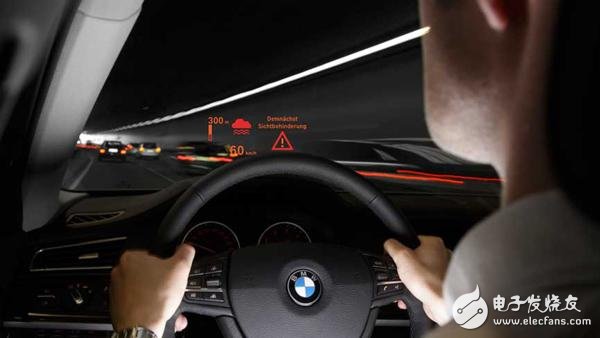
Today's ADAS systems, as well as future autopilot systems, rely on software to analyze large amounts of data from sensors, cameras, the Internet, infrastructure, and other vehicles.
Three types of vehicles, a revolution
It is not the emergence of the trend of automation and ADAS that is the first to subvert the status quo of the automotive industry. International competition and trade liberalization have permanently changed the automotive OEM market, and the domestic market share of the three major US auto giants has dropped sharply from 72% to 45% in the past 20 years. Although automotive technology has made great progress, the basic technology of driving has not changed much in the past four decades.
Now in South Bay, California, you can see three cars that represent the changing trends of the global automotive industry: a stylish Tesla S-type quietly passing; a rear window with a "U" (Uber initials) The new car is marked by passengers; the Lexus SUV, which is equipped with a rotating positioning radar on the roof, is driving along the street. The Google employees on the car are collecting data (or an employee from a car OEM) is using it. In the assembly of cars in parts of the rest of the world). These daily scenarios represent the three major technological change trends that are coming at the same time: electrification, networking and automation, which will completely reverse the current state of the automotive industry. Although the pace of development of each trend is different, all three trends have one thing in common: that is, software is king!
Software: shaping today, transforming the future
Since 2004, the average cost of electronic equipment per vehicle has doubled from 20% to 40%. Today's luxury car is typically equipped with 100 microprocessors and runs 100 million lines of software code that controls everything from engine timing to infotainment systems. We are in the midst of software, sensors and processors that are bringing new vehicle features, not just turning points from turning mechanical functions to electronic controls. Today's ADAS systems and future driverless systems will rely entirely on software to analyze the vast amounts of data from sensors, cameras, the Internet, infrastructure and other vehicles.
Vehicles are becoming more complex and have changed the automotive value chain. The trend of electrification, networking, and automation will only accelerate the value of companies that develop electronic devices and software, and alienate OEMs who cannot innovate.
This change will have two effects. First, software becomes a key market differentiation factor, forcing OEMs to shorten product cycles and support and update legacy systems. To meet consumer demand for fashionable technology, OEMs now have to revise or introduce new models every three to four years, with an average product cycle of five to eight years. This poses a number of challenges for OEMs, including rapid innovation, complex quality inspections, rising development costs, shortened R&D cost sharing periods, and the need for new sales and vehicle ownership rights models.
Second, the transition to software enables industry rookies to innovate in an industry that is known for its high-performance entry. After decades of industry giants occupying the industry, Google, Apple, Tesla and Uber are all eager to reshape the automotive industry through software. This idea seems to be a fantasy even five years ago.
In a typical ADAS-equipped vehicle (Figure 1), applications such as forward collision avoidance (FCA) are implemented with a set of sensors. These sensors provide data to the electronic control unit (ECU) about the external driving environment. The unit then uses the software to determine if there is a threat and runs a brake actuator (or other possible countermeasure) to mitigate the threat.
New technology system
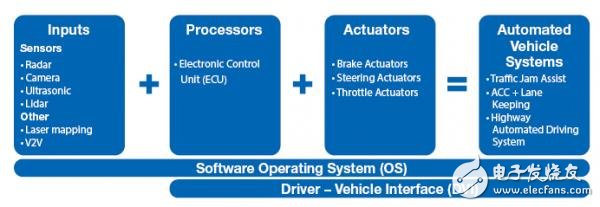
Figure 1 - The basic ADAS architecture is initially composed of a set of sensors that provide the ECU with data on driving conditions.
The sensors currently used for driver assistance applications are the hardware foundation of unmanned vehicles. But future sensors will certainly be smaller, faster, and cheaper. For example, ConTInental AG's sensors and processors can send and recalculate the algorithms needed to understand the driving environment every 10 to 60 milliseconds, while the human brain sends messages from sensory neurons to motor neurons in milliseconds.
Software algorithms that make vehicles self-driving safer and more efficient than driver driving in complex environments remain the most serious challenge.
But the real difference between today's ADAS systems and future full-drive systems is software. Regardless of how fast the input is processed, software algorithms that allow vehicles to drive more efficiently and safely than drivers in complex environments remain the most serious challenge. Complexity also includes the number of threats the driver encounters in different road conditions, the type of threat (eg, pedestrians, vehicles driving laterally, bicycles) and the speed at which the vehicle travels (see Figure 2).
Driving environment complexity

Figure 2 - ADAS software algorithms must consider road type, speed, and threat complexity.
As automotive OEMs compete to improve their software, they are rolling out their technology to the market in three distinct ways. OEMs such as BMW, Daimler and Nissan have begun selling mid-range ADAS systems designed for driving in a simple driving environment such as on the interstate. Regardless of traffic lights, turns, or multi-directional traffic, these vehicles can automatically steer, brake, and speed up at low speeds using systems such as “traffic jam assist†(the blue line in Figure 3 represents their trajectory). Ultimately, the system will be able to work at a faster rate or in a more complex urban environment and provide richer features such as merging, lane change or crossing. Some OEMs, such as Volvo and Ford, are introducing medium-function systems for specific geographic regions (delimited areas), such as intercontinental-specific extensions between two cities to take advantage of laser scanning mapping data. Over time, system functionality will increase and the number and complexity of geographic regions to which the system will be applied will increase (see the green line in Figure 3). Finally, Google's solution is to develop a new high-performance, all-wheelless vehicle (for delineated areas, urban low-speed or park driving), and then test and optimize its function in increasingly complex environments (see the orange line in Figure 3). ).
Consumer adoption and promotion
While OEMs are using different strategies to bring ADAS and vehicle automation to market, the ever-increasingly equipped ADAS-equipped cars have been introduced almost every year since 2010 and are constantly being introduced every year. In 2013, 29% of passenger cars offered optional forward collision warning, and 12% of these models had automatic braking. This year's Mercedes entry-level high-end CLA sedan has adopted the forward collision avoidance system as a standard. Volvo has also adopted its "City Safety" brake system as the standard for the XC60 model since 2010. . Now that the early generations of the technology have been available, what is the speed of consumer adoption?
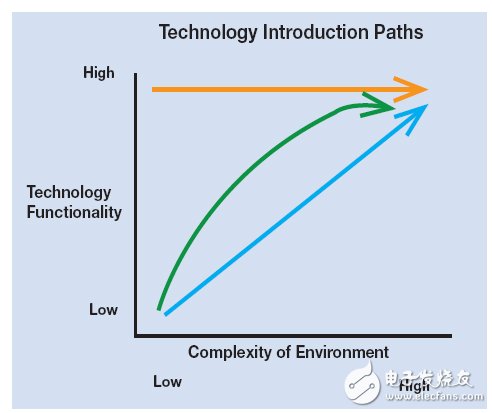
Figure 3 - A simpler system such as "Traffic Congestion Assistance" will be introduced first, followed by a system that can operate the vehicle.
To understand the promotion of vehicles equipped with ADAS functions and unmanned vehicles, you can refer to the speed of adoption of other technologies. As far as the overall trend is concerned, modern technologies such as mobile phones, the Internet and PCs are significantly faster than older technologies such as VCRs or TVs. Cars are often among the slower technologies. This is mainly because their cost = relatively high compared to consumer electronics, and the need to build roads. In contrast, smartphones are considered to be the fastest-growing technology in history, reaching saturation in just a decade. Mobile phones (also known as "feature phones" today) have reached saturation in just 20 years, while traditional wired phones have been used for a century (mainly because of the need to build wired networks).
Due to the cost of vehicles, vehicles equipped with ADAS and self-driving vehicles are likely to be slower to promote than other modern technologies, but they will still be promoted faster than traditional cars. With the introduction of other new technologies, we expect that a wave of early adopters and early adopters will promote early sales of vehicles equipped with ADAS, and most consumers will gradually adopt them once the safety advantage is proven (see Figure 4). What's important is that adding a typical ADAS device currently costs only about $3,000 (and is still about 7%-9% per year), which is equivalent to just $33,560 for a regular car sold in the US. About 10%. The cost of ADAS equipment in luxury models is only 2%-3% of the average selling price of vehicles.
Annual growth rate of new car sales by technology level
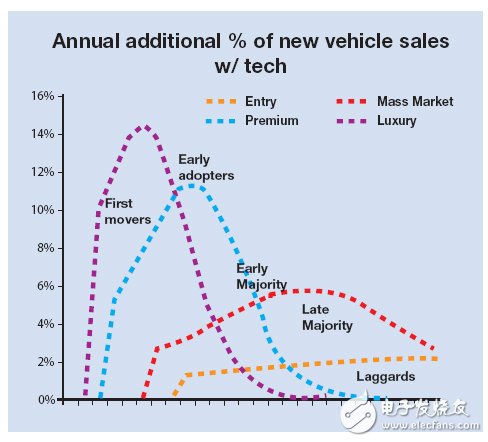
Figure 4 - Once consumers have taken advantage of safety and convenience, sales of ADAS and driverless vehicle (AV) technology will increase further.
Technology launch line
Marconi Pacific's research on ADAS and automation shows that the initial appeal to consumers is the security and convenience of the technology. Safety is a major stimuli for families because they are beginning to hear that cars equipped with ADAS can avoid collisions that would have injured or killed car passengers. But the bigger driver is saving time. Being able to drive on the highway (and soon on other types of roads), with only a small amount of energy to focus on the road, will be a major driver of demand.
Marconi Pacific has built a promotion model to better understand the pace of adoption of this technology and consumer adoption. The model is based on scenes and has a lot of input. Some of the key factors are annual car sales, ADAS technology release dates, and car sales forecasts. The results are shocking. According to the results of the model operation, it is predicted that the vehicle sales and new car sales of ADAS/AV will account for 50% and 85% of the total sales volume in each segment by 2035 (see Figure 5). Of course, different levels of ADAS and automation will have different impacts on society, including different total annual collision reductions, different impacts on traffic congestion, and different impacts on Uber-like vehicle sharing services.
Accumulated proportion of new car sales by technical level

Figure 5 - Based on model predictions, cumulative sales of ADAS/AV vehicles will approach 85% of total vehicle sales by 2035.
Automotive ecosystem impact
The automotive industry and related industries constitute a huge ecosystem that has a huge impact on the global economy. In the United States, transportation accounts for nearly 10% of US GDP. As revolutionary innovations in electrification, networking, and automation break the industry, OEMs and many other industries and businesses that have previously evolved around traditional private cars are deeply affected.
With the acceleration of the pace of delivering advanced features, automakers have a lot of business opportunities. These include more luxurious cars and features, more in-vehicle information systems/infotainment systems and a newer “driving†experience. However, there are still risks in terms of time-to-market competition, technical functions (software and hardware), complex procurement, dealers' technical sales capabilities, and brand differentiation. Because their technology is directly responsible for more driving experience, automotive OEMs, component and component market suppliers are also likely to take on higher product liability risks.
Auto parts and component suppliers and adjacent industries also have their own responsibilities and risks. Chip manufacturers and guarantee companies have thus had significant opportunities to implement and secure this new feature. In-vehicle information system content and platform providers and telecommunications network operators have the opportunity to have a wealth of opportunities in mapping, vehicle sharing, parking applications, infotainment, vehicle-to-any communication, and vehicle and web integration.
Impact of driver assistance systems and driverless vehicles on the ecosystem
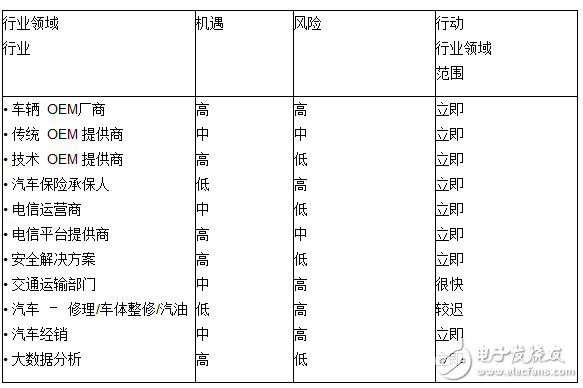
Figure 6 - ADAS and driverless vehicles will have a major impact on many auxiliary industries outside the automotive industry.
As the value shifts to software and infotainment, traditional vehicle hardware providers are likely to experience price cuts. As the frequency and severity of collisions and the resulting reduction in premiums, auto insurance companies need to develop new business models. Real estate developers, auto repair shops, traffic engineering and construction companies, bus companies (and other industries) must consider that as the safety of vehicles increases, the number of vehicles owned by private households decreases and eventually the unmanned vehicles are realized, and transportation will occur. What kind of change.
The three major technological advances that have brought about the current state of the automotive industry – electrification, networking and automation – have been realized today. Companies that can take action quickly to seize opportunities will be the winners in the market. And those who stop before, their fate has been repeated in history.
Reference material
1. Wards Auto, "Total Market Share of US Auto Sales by Enterprise, 1961-2014"
2. Gapper, John, "Software is Leading the Automotive Industry," Financial Times, February 18, 2015
3. Kuchinskas, Susan, Crash Course: Training the Brains of Driverless Cars, American Science, April 11, 2013.
4. Highway Safety Insurance Association (IIHS) Status Report, Volume 48, Number 3, April 25, 2013
Toolkits For Cutting Mahine and Cutting Materials
It is suitable for the blade of the Screen Protector Cutting Machine and the tools for installing the Screen Protection Film.
If you want to learn more about Accesseries For Cutter,Screen Protector Cleaning Tool, Cutting Blade, Cell Phone Scraper Tool, Tool Kit, Cutting Head Parts please click "Product Details" to view Accesseries For Cutter,Screen Protector Cleaning Tool, Cutting Blade, Cell Phone Scraper Tool, Tool Kit, Cutting Head Parts parameters, models, pictures, prices and other information .
Whether you are a group or an individual, we will try our best to provide you with accurate and comprehensive information about Accesseries For Cutter,Screen Protector Cleaning Tool, Cutting Blade, Cell Phone Scraper Tool, Tool Kit, Cutting Head Parts!Accesseries For Cutter,Screen Protector Cleaning Tool, Cutting Blade, Cell Phone Scraper Tool, Tool Kit, Cutting Head Parts
Shenzhen Jianjiantong Technology Co., Ltd. , https://www.jjthydrogelmachine.com